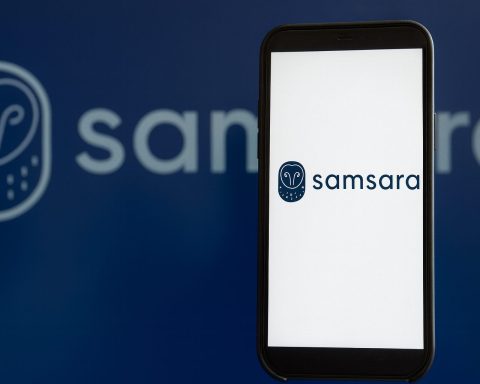- A federal judge (Reed O’Connor) on Oct. 14, 2025 ruled that the U.S. government’s downgrade of Humana’s 2025 Medicare Advantage star ratings stands [1]. Humana’s lawsuit to force a recalculation (after its plan fell from 4.5 to 3.5 stars) was thrown out, meaning CMS’s “star” scores (which affect bonus payments) remain as issued.
- The ruling leaves in place a major drop in Humana’s quality rating: roughly 45% of its Medicare Advantage members (its largest plan) were shifted from a 4.5-star plan to a 3.5-star plan [2]. Industry analysts estimate this could cost Humana on the order of $1 billion in lost bonus payments next year [3], since high-star plans earn hundreds of millions in federal subsidies [4].
- Humana’s stock (NYSE: HUM) tumbled on the news. Shares fell about 3–4% on Oct. 14 (continuing a weekly slide) [5]. Goldman Sachs reacted with a new “sell” rating on HUM and a $235 price target [6] (well below Monday’s close of $271 [7]). By contrast, Wall Street’s consensus is a neutral “hold” (average 12‑month target ≈$298 [8]).
- The decision coincides with the start of Medicare’s open-enrollment season (Oct. 15–Dec. 7), when seniors select plans. CMS star ratings (1–5) guide consumers and determine bonus payments: higher-rated plans get extra funding if they control costs [9]. A 3.5-star rating can mean less revenue and fewer enrollees.
- Humana said it is “disappointed” but will explore “all available legal options” and focus on quality improvements [10]. Experts warn the outcome could strain Humana’s profits or benefits: 9i Capital’s Kevin Thompson notes it “may force [Humana] to either raise prices or degrade [services] to manage profitability” [11].
Lawsuit Outcome and Court Ruling
Humana (the second‐largest Medicare Advantage insurer) sued CMS in July after its star rating unexpectedly plunged. The insurer argued that CMS unfairly flagged three interpreter calls as failures (with no callback allowed), causing a 4.5-to-3.5 star drop [12] [13]. On Oct. 14, U.S. District Judge Reed O’Connor (Northern Texas) rejected Humana’s arguments [14]. He found that CMS had acted “in accordance with its guidelines” and did not act arbitrarily [15]. In particular, the judge upheld CMS’s no-callbacks policy for those language-line test calls as lawful [16].
The case was dismissed “with prejudice,” meaning Humana can’t refile the exact same lawsuit, though it could seek appeal [17]. (A prior challenge by Humana was already thrown out in July on procedural grounds for failing to exhaust appeals [18] [19].) In short, the court has now twice sided with CMS on the merits. A Humana spokesperson said the company was “disappointed” but remains “committed to delivering meaningful improvements” and will consider further legal remedies [20].
Medicare Advantage Ratings Impact
CMS rates Medicare Advantage plans on a 1–5 star scale to reflect quality and service. These ratings influence premium costs and trigger bonus payments – high-star plans earn extra federal subsidy if they control costs [21]. Humana’s star-rating drop is unusually large: its major plan (covering about 45% of MA members) fell from 4.5 to 3.5 stars [22]. For comparison, a 4-star or higher rating is typically considered the key threshold for added bonuses and market competitiveness.
Analysts say the 2025 downgrade could have massive financial effects. Healthcare Dive reports that insurers link star ratings directly to payments and enrollees, and that Humana’s slip is expected to cut its revenue by roughly $1 billion in 2026 [23]. (As Michael Ryan of MichaelRyanMoney.com notes, “billions in taxpayer funded bonuses” are at stake. He quipped that those “bonuses” were largely about “gaming a system,” and that nearly half Humana’s book was just downgraded [24] [25].)
The star system is meant to help consumers compare plans, but critics say it can also become a gamble for insurers. For Humana, the verdict means it missed out on 2025 bonus payouts that might have been used for lower premiums or extra benefits. CMS officials did not comment, but industry experts point out that other insurers have had mixed luck in court. UnitedHealth Group successfully sued for a recalculation of its ratings earlier this year, and startup Alignment Healthcare won one; meanwhile Humana and Florida Blue lost theirs [26].
Market and Stock Reaction
Investors immediately repriced Humana after the ruling. On Oct. 14 the stock closed around $261 (off about 3.6% that day [27]), continuing a slide that erased most of a recent rally. (Humana shares had surged ~11% on Oct. 3 when preliminary 2026 star ratings came in better than feared [28].) The legal defeat, coupled with broader healthcare pressures, prompted caution. Goldman’s new “sell” rating (with a $235 target) is based on concerns that industry-wide MA recoveries will vary and that Humana faces a longer haul in its government business [29].
By contrast, most analysts remain in wait-and-see mode. MarketBeat notes a consensus “Hold” rating (out of 20 analysts) for Humana, with an average 12-month target near $298 – about 14% above current prices [30]. Price targets range widely (from ~$235 to $347) due to uncertainty. On broader markets, the healthcare sector did rally on Oct. 3 on ACA subsidy news [31], but as of Oct. 15 Humana’s shares are trading well below last week’s peaks.
Beyond stock quotes, some Wall Street observers warn of downstream effects. Kevin Thompson (9i Capital) argues that when insurers lose government revenue, “shareholders’ interest comes before the interest of the patient” – implying Humana may have to raise premiums or cut perks to preserve margins [32].
Expert Analysis and Outlook
Policy analysts say the decision underscores challenges in the MA star program. Judge O’Connor’s ruling affirmed CMS’s process, meaning insurers must focus on compliance (e.g. language line access) to protect stars. Humana itself had planned for this outcome: it reportedly submitted its 2026 bids assuming a 3.5-star rating, so its forecasts were already conservative [33]. The company must now push to improve metrics and aim for a return to top-quartile ratings by 2027, as it earlier promised [34] [35].
The timing is notable: the Medicare annual enrollment period kicks off Oct. 15. Seniors will use star ratings (prominently displayed on plan comparisons) to guide their choices. Humana will have to contend with the reputational hit – a lower star rating on nearly half of its business – just as beneficiaries shop for next-year coverage. On the other hand, the insurer already announced added 2026 benefits (like more preventive care and simpler plan designs) during a recent ‘Investor Day’ to offset headwinds [36] [37].
Looking ahead, industry watchers will be tracking two key indicators: enrollment trends during AEP, and Humana’s Q3 earnings in early November. Any shortfall in new enrollees or weaker-than-expected guidance could further pressure the stock. Conversely, if Humana demonstrates effective remedial steps or if CMS makes future rule changes on how calls are tested, the company might recover ground. For now, most analysts expect Humana to tread carefully – focusing on execution rather than growth – while the effects of the star-rating verdict play out in the marketplace [38] [39].
Sources: Reporting from Reuters [40] [41] [42], HealthCare Dive [43] [44], Newsweek [45] [46], Fierce Healthcare [47] [48], and related financial coverage [49] [50] [51]. These were supplemented by industry analyses and regulatory filings. All stock data is as of Oct. 14–15, 2025.
References
1. www.reuters.com, 2. www.newsweek.com, 3. www.healthcaredive.com, 4. www.reuters.com, 5. www.reuters.com, 6. www.investing.com, 7. www.investing.com, 8. www.marketbeat.com, 9. www.reuters.com, 10. www.reuters.com, 11. www.newsweek.com, 12. www.reuters.com, 13. www.healthcaredive.com, 14. www.reuters.com, 15. www.fiercehealthcare.com, 16. www.healthcaredive.com, 17. www.healthcaredive.com, 18. www.reuters.com, 19. www.healthcaredive.com, 20. www.reuters.com, 21. www.reuters.com, 22. www.newsweek.com, 23. www.healthcaredive.com, 24. www.newsweek.com, 25. www.newsweek.com, 26. www.fiercehealthcare.com, 27. www.reuters.com, 28. ts2.tech, 29. www.investing.com, 30. www.marketbeat.com, 31. ts2.tech, 32. www.newsweek.com, 33. www.healthcaredive.com, 34. ts2.tech, 35. www.healthcaredive.com, 36. ts2.tech, 37. ts2.tech, 38. www.investing.com, 39. www.newsweek.com, 40. www.reuters.com, 41. www.reuters.com, 42. www.reuters.com, 43. www.healthcaredive.com, 44. www.healthcaredive.com, 45. www.newsweek.com, 46. www.newsweek.com, 47. www.fiercehealthcare.com, 48. www.fiercehealthcare.com, 49. www.investing.com, 50. www.investing.com, 51. www.marketbeat.com







